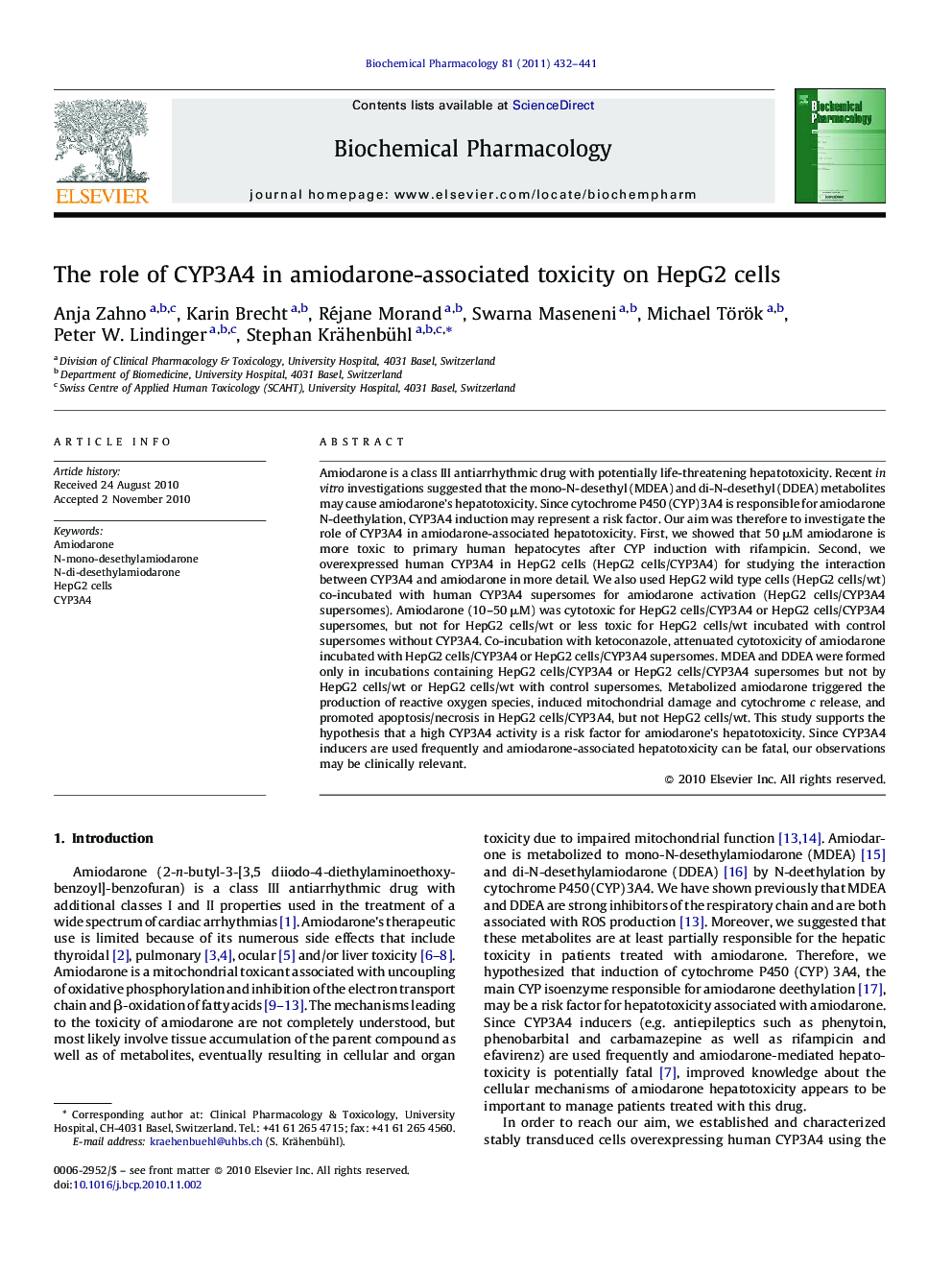| کد مقاله | کد نشریه | سال انتشار | مقاله انگلیسی | نسخه تمام متن |
|---|---|---|---|---|
| 2513176 | 1118398 | 2011 | 10 صفحه PDF | دانلود رایگان |

Amiodarone is a class III antiarrhythmic drug with potentially life-threatening hepatotoxicity. Recent in vitro investigations suggested that the mono-N-desethyl (MDEA) and di-N-desethyl (DDEA) metabolites may cause amiodarone's hepatotoxicity. Since cytochrome P450 (CYP) 3A4 is responsible for amiodarone N-deethylation, CYP3A4 induction may represent a risk factor. Our aim was therefore to investigate the role of CYP3A4 in amiodarone-associated hepatotoxicity. First, we showed that 50 μM amiodarone is more toxic to primary human hepatocytes after CYP induction with rifampicin. Second, we overexpressed human CYP3A4 in HepG2 cells (HepG2 cells/CYP3A4) for studying the interaction between CYP3A4 and amiodarone in more detail. We also used HepG2 wild type cells (HepG2 cells/wt) co-incubated with human CYP3A4 supersomes for amiodarone activation (HepG2 cells/CYP3A4 supersomes). Amiodarone (10–50 μM) was cytotoxic for HepG2 cells/CYP3A4 or HepG2 cells/CYP3A4 supersomes, but not for HepG2 cells/wt or less toxic for HepG2 cells/wt incubated with control supersomes without CYP3A4. Co-incubation with ketoconazole, attenuated cytotoxicity of amiodarone incubated with HepG2 cells/CYP3A4 or HepG2 cells/CYP3A4 supersomes. MDEA and DDEA were formed only in incubations containing HepG2 cells/CYP3A4 or HepG2 cells/CYP3A4 supersomes but not by HepG2 cells/wt or HepG2 cells/wt with control supersomes. Metabolized amiodarone triggered the production of reactive oxygen species, induced mitochondrial damage and cytochrome c release, and promoted apoptosis/necrosis in HepG2 cells/CYP3A4, but not HepG2 cells/wt. This study supports the hypothesis that a high CYP3A4 activity is a risk factor for amiodarone's hepatotoxicity. Since CYP3A4 inducers are used frequently and amiodarone-associated hepatotoxicity can be fatal, our observations may be clinically relevant.
Figure optionsDownload as PowerPoint slide
Journal: Biochemical Pharmacology - Volume 81, Issue 3, 1 February 2011, Pages 432–441